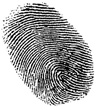Biometric open protocol standard for safer authentication established
 While biometrics are becoming a ubiquitous component of securing consumer data on mobile and other digital devices, there is no industry standard in place to protect that data once it leaves the device and enters the cloud. Today, Hoyos Labs announced the formalization of its Biometric Open Standards Protocols (BOPS).
While biometrics are becoming a ubiquitous component of securing consumer data on mobile and other digital devices, there is no industry standard in place to protect that data once it leaves the device and enters the cloud. Today, Hoyos Labs announced the formalization of its Biometric Open Standards Protocols (BOPS).
BOPS comprises a set of rules that govern secure communications among a variety of client devices including mobile phones, desktop computers and ATMs, among others, and a trusted server managing the acquisition and manipulation of biometric data captured by those devices.
The BOPS guidelines make use of The U.S. Department of Defense’s Trusted Computer Systems Evaluation Criteria (TCSEC) and are biometric agnostic.
“Nearly every smartphone, digital device or computer system that has a financial component to it will have a biometric component built into it in the very near future. The concerns about fraud, hacking and personal privacy have created a tidal wave of momentum on this front,” said Hector Hoyos, CEO of Hoyos Labs.
“Now, securing all of the biometric data that’s being generated is of the utmost importance. As with every major technological breakthrough, a series of accepted standards and protocols must be widely adopted from the manufacturer and database management end before consumers can fully be comfortable. BOPS are those standards and protocols,” Hoyos added.
The BOPS system addresses the five most widely recognized key security consideration components:
Identity assertion – The BOPS identity assertion platform provides a guarantee that named users are who they claim to be. The identity assertion implies reliance on human biometrics; however, the BOPS is an interoperable standard and can incorporate any identity asserter, or a number of asserters, that provides this guarantee. The application of the Intrusion Detection System (IDS) provides active monitoring to prevent spoofing of the credentials set and blacklisting of a subject or device that makes malicious attempts.
Role gathering – Role gathering is focused on the data confidentiality and privileged access based on the rules enforced by a known system. To determine whether a specific access mode is allowed, the privilege of a role is compared to the classification of the group to determine if the subject is authorized for a confidential access. The objects structure is defined by the access control. Role gathering occurs on the system’s level or through the client/server call. The BOPS server stores role-gathering information to associate a unique user with a unique device.
Access control – The BOPS supports access control between the named users and the named objects (e.g., files and programs). The adjudication mechanism is role-based and allows users and administrators to specify and control the sharing of those objects by named individuals, or defined groups of individuals, or by both.
Auditing – The BOPS supports all auditing requests at the subject/object level or at the group level. The BOPS uses Aspect Oriented Programming (AOP) to ensure that all calls are safely written to an audit trail. A RESTFul web services and JSON interface provides a mechanism to read the audit trail. Auditing may occur at the subject per action, the object per action or the group per action. For example, a group of users called “Accounting” may audit all writes to General Ledger. Or the “Chief Financial Officer” may have audits for reads of the Income Statement.
Assurance – The auditing of all BOPS specifications and proof of the security model to prevent a system from unknowingly being compromised.